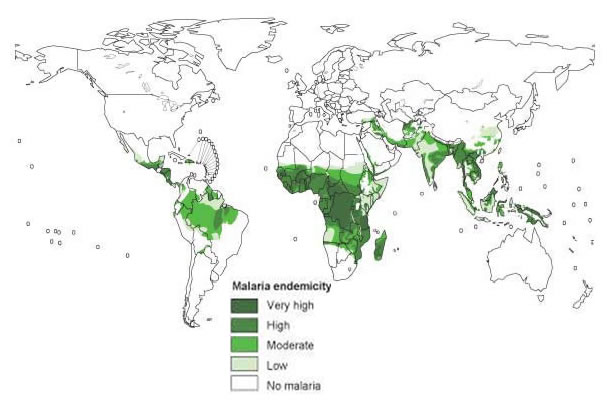When you were considering the ideal location of your home, was the presence of disease a factor in your considerations? Diseases, much like you and any other organism, thrive in areas where they are best suited to the climate.

Malaria is an example of a disease that is endemic to the areas shown in the figure above. Malaria infects 300-500 million and kills 3 million people every year. Approximately 90% of these deaths occur in Africa, with the highest rates of mortality among children. Malaria is the cause of 1 in 5 African childhood deaths.
Malaria is transmitted by the bite of an infected Anopheles mosquito, which introduces the malaria parasite into the victim where it matures and multiplies. This makes malaria a vector-borne disease (VBD). Both the mosquito and parasite associated with malaria tend to thrive in warm, humid regions, especially after large rainfalls leave standing water in which the mosquito can lay eggs.
Question: Climate is a crucial player in the distribution of disease. Describe how you think the geographic range of diseases, such as malaria, will be affected by climate change. Use the Visualizing Global Climate Change learning tool to remind you of climate model forecasts of climatic factors like temperature and precipitation in the next century.